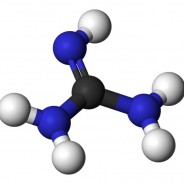
A brief description
It represents an aqueous solution of polyhexamethyleneguanidine hydrochloride, and possesses a broad-spectrum of bactericidal, fungicidal, algaecidal, virucidal actions.
The discharged preparation Bio-FPG (polyhexamethylene hydrochloride) is a high-performance disinfectant, having antimicrobial, antiviral, antifungal actions, moreover, Bio-FPG – a good flocculating agent.
Due to its unique properties, a wide range of biocidal action and flocculating ability, the preparation is used in various application areas related to cleaning and disinfection of waters of different function and can provide the realization of standards for microbiology required by standard documents and supervisory members to water.
Careful preliminary work with the preparation in laboratory and experimental-industrial conditions on the water of exploitable or projectible purifying construction, can allow to achieve a low residual concentration of Bio-FPG in purified water (no more than MAC (maximum allowable concentration)), at the same time in contact with natural conditions the preparation decompose.
Thus, the disinfection of the interior surfaces of drinking water basins by means of chlorinated disinfectant does not protect them from biofouling. The use of a poliguanidinovogo preparation Bio-FPG provides long-term protection of reservoirs and at the same time the procedure of disinfection is safer for staff.
The bactericidal action of Bio-FPG
The results of studies of biocidal properties of the reagent Bio-FPG on modeling systems of artesian and superficial water showed that the effect of disinfection is determined mainly by the dose of reagent, the duration of its contact with water as well as the level of chemical and biological contamination of water.
The investigation of the influence of a dose and exposure on to the level of the decontamination of fluvial water by the reagent Bio-FPG were carried out on the example of the most resistant to the impact of disinfectants of microorganisms Escherichia coli 1257.
The survival of microorganisms was determined by the number of colony formative units (cfu) during the seeding of selected samples of 1 cm3 on medium Endo and cultivation for 24 hours at 37C. The experiments were carried out in 3-5 multiple repeatability and the results were statistically processed.
The findings prove that Bio-FPG in the concentrations of 2.0, 2.5, 3.0, 4.0, and 5.0 mg / l disinfects water quickly. It is evident from the lack of the number of anaerobic units in observable water within 30 , 20, 18, 15 and 10 minutes. To achieve the same effect at a dose of 1.5 mg / l Bio-FPG it is necessary the exposure to be 60 minutes, for a dose of 1.0 mg / l - 120 minutes and for a dose of 0.5 mg / l – it should be more than 120 minutes.
The dose- temporal characteristics of the disinfectant let us to choose an optimal mode of disinfection with respect to reading - the dose of the reagent and the time of the achievement of a required degree of disinfection. These data show that the Bio-FPG displays a strong antimicrobial action and the exposure should be from 9 to 140 minutes depending on the concentration of Bio-FPG (0,5-5,0 mg / l) if you want to achieve a reliable disinfection (99.99%).
It should be noted that according to the dose-temporal data the optimal concentration should be chosen in the interval from 1.0 to 2.0 mg / l, as during the usage in concentrations below 1.5 mg / l the exposure sharply increases to the achievement of the necessary degree of decontamination and the use of Bio-FPG at concentrations above 2.0 mg / l is unpractical because the reduction of the time required to achieve an appropriate degree of disinfection leads to high consumption of the reagent.
The data confirm that humus acids reduce the speed of antimicrobial action at the concentration of 0.1 mg / l. At the concentration of 1.0 mg / l the protective effect of humus substances is greatly increased. Even at a rather high concentration of biocidal polymer - 2,0 mg/l in the presence of 1,0 mg/l of humus acids within 120 minutes we can observe the decrease in the quantity of test microorganisms (E. coli 1257) only in 1000 times, while for the lack of humus acids the quantity of bacteria decreases in 104 times within 15 minutes. The withering away of bacteria under the influence of Bio-FPG in the presence of 10.0 mg / l of humus acids is very slow: after 180 minutes a disinfection effect was negligible, but the next day all introduced bacteria were killed.
The tests of disinfectant and flocculating properties of Bio-FPG reagent were also carried out on natural river water in the conditions which are maximum approached to the work of traditional treating constructions. The results of the traced studies on the stands of test coagulation showed that for 30-60 minutes a complete disinfection of river water with coloration of 24-32 degrees and turbidity of 1,2-4,0 mg / l during the administration of 1.0-1.5 mg / l Bio-FPG was achieved. By the increase of the level of biological and chemical pollution of river water it is required to enlarge the doses of reagent due to its expenditure on the formation of poorly soluble compounds with organic and inorganic impurities. So, at the increase in coloration of river water till 35-42 degrees and turbidity to 4,5-8,6 mg/l a reliable disinfecting of water is reached within 30-60 minutes at the doses of Bio-FPG equal to 1,5-2,5 mg/l.
he quantity of an optimal dose of the reagent Bio-FPG in water preparation technologies substantially depend on the level of the contamination of natural water and so should be experimentally determined in every specific case.
The results of numerous studies have shown that the reagent Bio-FPG can provide an effective disinfection of purified water for a long time. The duration of disinfectant "aftereffect" is defined not so much by the size of the introduced dose of biocide agent, as for its residual content in decontaminated water. Our findings confirm that water remains epidemically secure until it contains salts of polyhexamethyleneguanidine even at the level of trace quantities (above 0.05 mg / l). The salts of polyhexamethyleneguanidine - chemical-resistant compounds in a wide range of acidity, they are not oxidized by atmospheric oxygen and therefore provide a prolongate decontaminating action.
Thus, these results make us to conclude that a new generation of reagents based on the salts of polyhexamethyleneguanidine may be an alternative to chlorine in drinking water preparation technologies, as they are equal to it in decontaminating potential, and can provide a prolongate decontaminating action, and at the same time, in contrast to disinfectant-oxidants, they do not form by-products in purified water.
The flocculating effect of Bio-FPG
In addition to fail-safe disinfection Bio-FPG has a highly flocculating ability that lets to increase the level of purification of different types of waters significantly. The decontamination of natural water by the reagent is based on the coagulation of its impurities with the help of aluminum salts. The efficiency of the process of coagulation pollution abatement depends on many factors, that significantly complicate its optimization on treating constructions. Bio-FPG, as cation polyelectrolyte, significantly improves the rate of flocculation process and forward to the increase of size and density of flocculi and hence the rate of their sedimentation. Therefore, during a combined application of flocculator with the agent Bio-FPG in water purification technology the coloration, turbidity and concentration of residual aluminum in renovated water are substantially reduced.
The process of intensive formation of dense, quickly settling floccule of hydrate aluminum in the presence of Bio-FPG occurs at significantly lower doses of coagulant, which allows to reduce the optimum dose of sulphate aluminum in 1.5-2.5 times.
The process of coagulatory purification is considerably complicated when the temperature of natural waters, especially highly colored, is below 10 0C, since in these conditions watered small flakes of hydrate aluminum are formed, which buzz in the water depth that leads to high values of turbidity and the content of aluminum in purified water. Therefore it should be particularly noted that Bio-FPG retains a high flocculating ability in the processes of reagent purification even at a low temperature of water and high content of organic impurities in it.
Practiced data confirm that during the administration of 1.0-1.5 mg / l of biocidal polymer after sulphate aluminum a significant reduction in turbidity, coloration, and the content of residual aluminum in settled unfiltered water (water after settler) is achieved. It should be noted that these data were obtained during a winter period at the lowest temperatures of river water (0.5 - 1.2 0C) when the processes of coagulation purification are complicated by the formation of stable colloidal systems of hydrate aluminum.
An important property of the reagent Bio-FPG is its ability to bind organic admixtures of natural waters into less soluble compounds that stipulate their coloration, which allows successfully solve the problem of the decrease of coloration and the content of organic compounds in drinking water. Thus, even in the absence of coagulant the administration of 1.0-2.0 mg / l Bio-FPG is sufficient to reduce the coloration of purified water to the level of compliance with a standard for drinking water.
Conclusion
A decontaminating agent Bio-FPG can be referred to perspective agents of water preparation, as it uniquely combines very important properties for water preparation, in particular:
· High decontamination potential and a wide range of biocidal effect, that allow you safely disinfect different types of water, even at high levels of biological and chemical contamination;
· High flocculating ability, which makes it possible to solve the problem of the reduction of turbidity, the content of residual aluminum in purified water and the reduction of the consumption of coagulants in the processes of water treatment;
· The ability to form less soluble compounds with organic and inorganic impurities of waters, making it possible to achieve a high level of natural water purification on the stage of coagulation and filtration of humic, fulvic acids, tannin and protein substances and other pollutants, and successfully solve the problem of coloration reduction of potable water;
· The lack of corrosive activity, in addition, Bio-FPG helps to reduce the intensity of the biocorrosion of equipment and waterworks of water preparation station;
· Low toxicity, stability and safety of the reagent and its operating solutions that are in use, storage and transportation;
Environmental safety for surroundings and in working space of water preparation station.
« back





